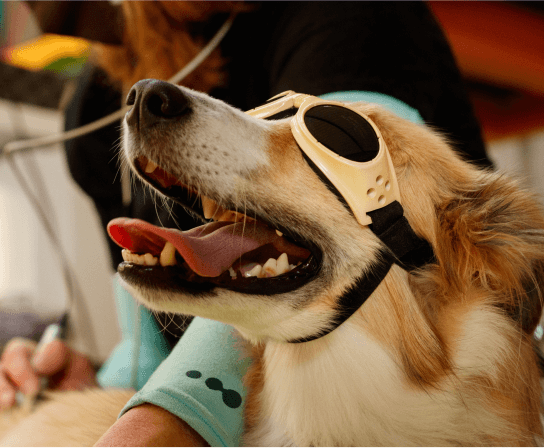Laser therapy has long been used in human medicine, and 43rd Avenue Animal Hospital is pleased to offer this safe and highly beneficial pet laser therapy to our patients!
This painless, drug-free, non-invasive technology treats acute and chronic injuries, accelerates the healing process after surgery, and alleviates joint pain. It works by stimulating cell regeneration, increasing blood flow to the targeted area, and releasing the body’s own pain-relieving endorphins and hormones.
Shine a Light on Healing
The process generally takes between 10 and 30 minutes, with most patients seeing positive effects after 3-5 uses. The treatment continues to relieve pain and fight inflammation for up to 24 hours following the session. Not only is the process not painful, but many patients find it very soothing. Some pets get very relaxed during their sessions, and others even fall asleep!
Conditions improved with pet laser therapy include:
- Hip dysplasia
- Post-surgical incisions and soft-tissue trauma
- Arthritis and degenerative joint disease
- Musculoskeletal injuries
- Neuromuscular disease
- Hot spots and ear infections
Laser therapy is typically combined with other types of veterinary care, including pharmaceutical regimens and other treatments. The broad biochemical benefits and lack of adverse side effects have made laser therapy a go-to for both post-operative rehab in veterinary medicine and an excellent choice for pets who can’t take traditional pain medications (such as NSAIDs) due to health concerns.
If you’re wondering if laser therapy could benefit your pet, the answer is likely yes! We’ve had some amazing success stories, and we’re incredibly excited to offer this innovative service to our patients. Contact us at (602) 843-5452 with any questions or to schedule your pet’s consultation today.
